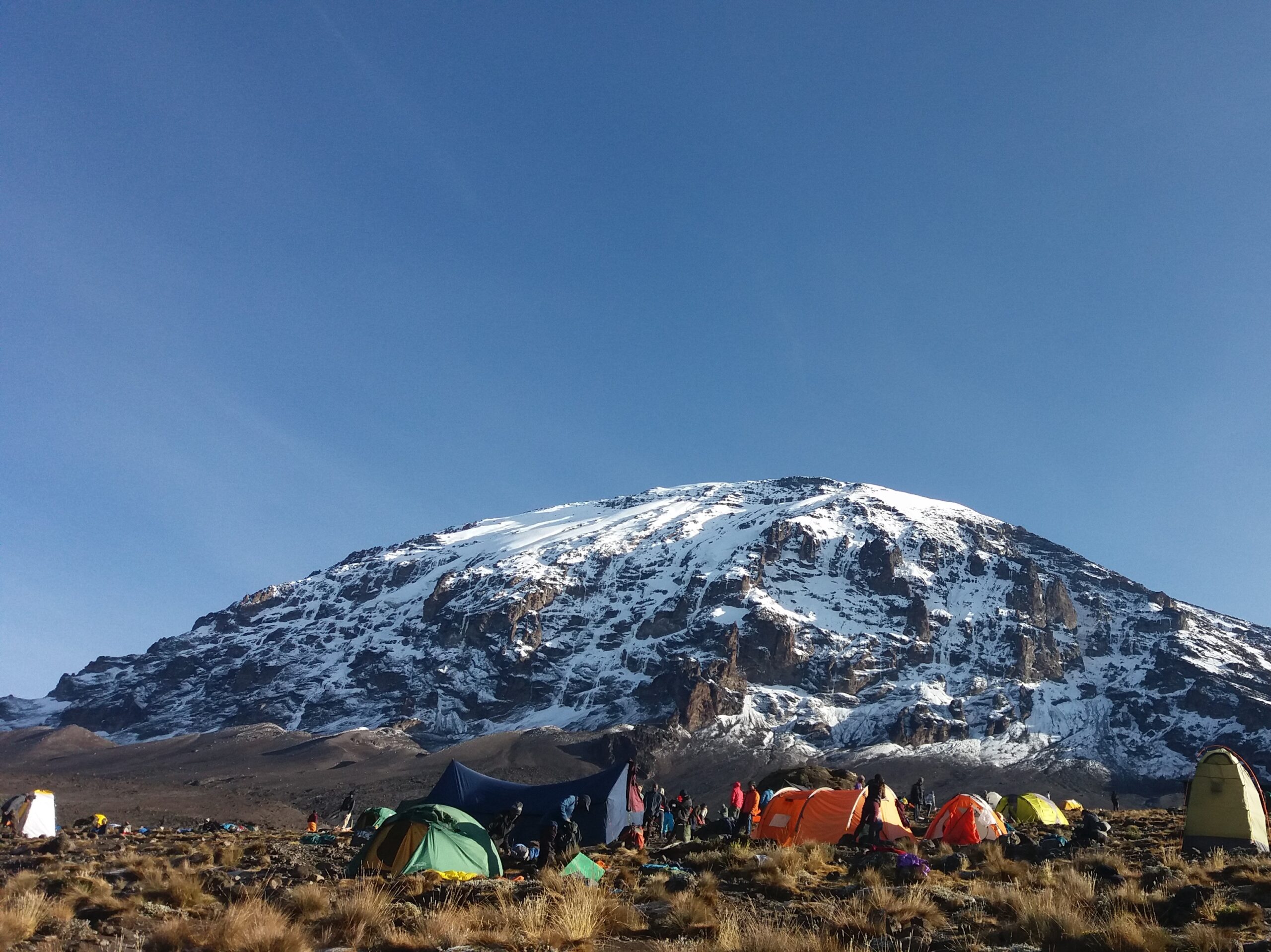6 Days Machame Route Luxury
from
$ 2,395
“Whiskey Route,” is one of the most popular and scenic paths for climbing Mount Kilimanjaro.
-
Reviews 0 Reviews0/5
-
Vacation Style Holiday Type
-
Hiking
-
Mountain
-
-
Activity Level Challenging
-
All about the 6 Days Machame Route Luxury.
The Machame Route, also known as the “Whiskey Route,” is one of the most popular and scenic paths for climbing Mount Kilimanjaro. It’s well-loved for its diverse landscapes, high success rates, and adventurous experience.
Key Highlights of the Machame Route:
- Duration:
- Typically completed in 6 to 7 days.
- The 7-day itinerary is recommended for better acclimatization.
- Distance:
- Covers approximately 62 kilometers (37 miles) from start to finish.
- Difficulty:
- Moderate to challenging.
- Suitable for trekkers with good fitness levels and some hiking experience.
- Starting Point:
- Begins at Machame Gate (southwest of Mount Kilimanjaro).
- Scenery:
- Passes through lush rainforests, heath and moorland zones, alpine deserts, and glaciated summit zones.
- Offers stunning views of the Shira Plateau, Lava Tower, Barranco Valley, and Uhuru Peak.
- Acclimatization:
- Follows the “climb high, sleep low” principle to help with altitude adaptation.
- Stops like Lava Tower provide great acclimatization opportunities.
- Crowds:
- Popular among climbers, so it can be crowded, especially during peak trekking seasons.
- Route Description:
- Day 1: Hike through the rainforest to Machame Camp.
- Day 2: Trek through moorland to Shira Camp.
- Day 3: Acclimatization hike to Lava Tower, then descend to Barranco Camp.
- Day 4: Climb the famous Barranco Wall and trek to Karanga Camp.
- Day 5: Ascend to Barafu Camp (base camp for the summit attempt).
- Day 6: Summit day (Uhuru Peak) and descend to Mweka Camp.
- Day 7: Final descent to Mweka Gate.
- Success Rate:
- The 7-day itinerary has a higher success rate due to better acclimatization opportunities.
- Cost:
- Slightly more affordable than routes like Lemosho or Northern Circuit, but prices vary by operator.
Pros:
- Stunning and varied scenery.
- Great acclimatization opportunities, improving the chances of reaching Uhuru Peak.
- A rewarding balance of challenge and adventure.
Cons:
- Can be crowded due to its popularity.
- Steeper ascents compared to gradual routes like Rongai or Northern Circuit.
The tour package inclusions and exclusions at a glance
What is included in this tour?Items that are included in the cost of tour price.
- Park Fees:
- Kilimanjaro National Park entry, camping, and rescue fees.
- Accommodation:
- Camping gear (tents, sleeping mats).
- Two nights’ hotel accommodation (before and after the trek) in Moshi or Arusha.
- Meals and Drinks:
- All meals during the trek (breakfast, lunch, dinner).
- Drinking water and hot drinks (e.g., tea, coffee).
- Guides and Crew:
- Professional, English-speaking mountain guides.
- Porters to carry luggage and camping gear.
- Cooks to prepare meals.
- Transport:
- Transfers to and from the mountain gate (Londorossi Gate).
- Equipment:
- Dining tent with tables and chairs.
- Cooking and eating utensils.
- First aid kits, including an oxygen cylinder for emergencies.
- Permits and Documentation:
- Trekking permits and other required documentation.
- Support Services:
- Emergency evacuation (only to the park gate, not medical evacuation).
- Summit certificate (Gold for Uhuru Peak and Green for Stella Point).
What is not included in this tour?Items that are not included in the cost of tour price.
Excluded from the Package:
- Flights:
- International and domestic flights to Tanzania.
- Visa and Travel Costs:
- Tanzania tourist visa fees.
- Travel insurance (mandatory for Kilimanjaro treks, covering high-altitude trekking and evacuation).
- Personal Equipment:
- Clothing, sleeping bags, trekking poles, and personal gear.
- Snacks and energy bars.
- Optional Expenses:
- Tips for guides, porters, and cooks (customary but not included).
- Additional hotel nights or excursions outside the trek.
- Medical Expenses:
- Vaccinations or medication (e.g., malaria prophylaxis).
- Personal first aid supplies.
- Beverages:
- Alcoholic drinks, sodas, and bottled water (beyond the trek-provided water).
- Other:
- Souvenirs or personal expenses.
- Gear rental (if needed, often available through the tour operator at extra cost).
The tour package inclusions and exclusions at a glance.
- Three-course meals prepared by private chefs
- Fresh, organic food (fruits, vegetables, meats, and energy-rich meals)
- Hot beverages (tea, coffee, hot chocolate) anytime
- Special dietary accommodations (vegetarian, vegan, gluten-free, etc.)
- Private trekking group (no large shared groups)
- Essential for emergency evacuation, trip cancellations, and health coverage, but must be purchased separately.
- Hiking boots
- Thermal clothing
- Gloves, hats, sunglasses
- Personal snacks
- Daypacks
- Laundry, souvenirs, phone calls, and extra services at lodges.
1. Hiking Boots (Essential)
- Waterproof & Insulated – Keeps feet dry and warm.
- High Ankle Support – Prevents sprains on rough terrain.
- Well-Broken-In – Avoids blisters and discomfort.
2. Camp Shoes (Recommended for Evenings)
- Lightweight Sneakers or Sandals – Gives your feet a break after trekking.
- Closed-Toe or Open-Toe Options – Depending on preference and warmth.
3. Gaiters (Optional but Useful)
- Protects Against Mud, Snow, and Debris – Keeps your feet dry and clean.
Overall Rating
0/5


